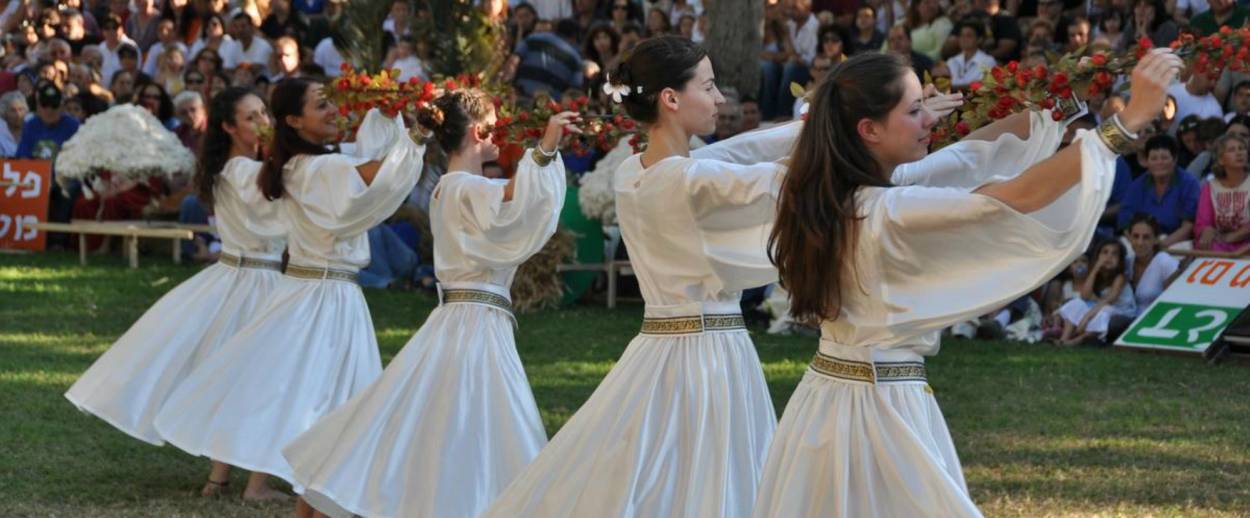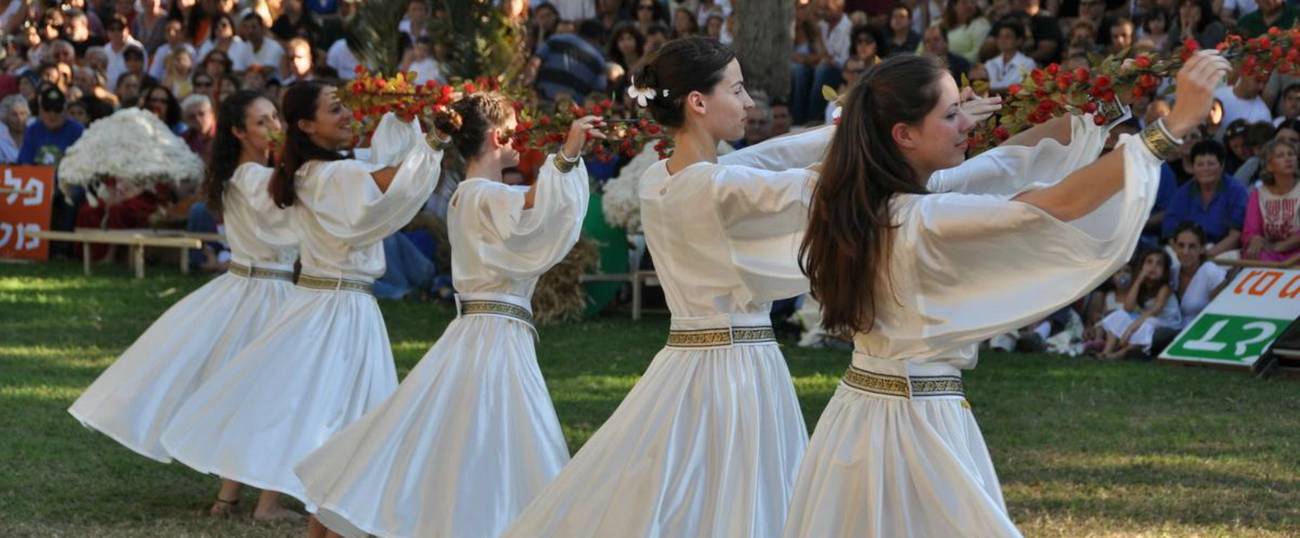Belly Rolling and Hip Twisting Like an Israeli
A dispatch from Horati, a four-day Israeli folk dance festival in Queens that included nightly dance parties (of course)




When I entered the sweaty dance studio at Queens College, an instructor was yelling into a mic. “Ooh-pah!” he said to what appeared to be a mostly over-50 crowd. “Start with right: Right and left and one and back and one and back… Up your left hand!”
Bellies rolled and hips twisted. The uninhibited clapping, pivoting, and grapevining reminded me of my days as an Israeli dance teacher at a summer camp. Sure, this wasn’t Camp Ben Frankel in Carbondale, Illinois, but I was ready to bust a move nonetheless. How hard could it be?
The workshop I crashed was part of the Horati festival, put on by the New York-based Israeli Dance Institute, which brought together the greats of Israeli choreography in what was dubbed the “the World’s Fair of Israeli Folk Dance.” In fact, it had been 16 years since the last such gathering, in Long Island. At this year’s event, which took place last weekend, hundreds of dancers from all over the U.S. and elsewhere, including Chile, Australia, and, of course, Israel, enjoyed performances and participated in workshops themselves.
Given my dance background, I felt well prepared to eifo eifo, hippo hippo with the best of them. But I was in for a surprise when I showed up to a class taught by world-renowned Israeli choreographer, Yaron Elfasy: I could barely keep up with the other dancers, who had been training since 9:30 in the morning, and were in lock-step. So I devised a strategy to follow the most confident people in the front of the room. And so, during “Hachi Yisraeli” (“The Most Israeli”), I tracked Lorraine Cohn and Judy Friedman, sisters from Long Island, whose parents were square dancers. They told me after class that they’d been dancing for almost 50 years. “We’ve been dancing since we were in the womb,” said Friedman.
Cohn and Friedman said they were having a blast. They had learned from famous Israeli choreographers Israel Yakovee and Moshiko Halevy. They also trained with Galgal Ba’ma’agal, a wheelchair folk dancing troupe—one of three visiting performing groups in New York for the weekend—that taught the sisters how to dance with people in (customized, 360-degree-spinning) wheelchairs.
Matan Schecter, a 23-year-old Israeli dance teacher from Rockville, Maryland, and likely one of the youngest people at the convention, said that Israeli folk dance is “kind of a weird hobby” but that he loves the art form because of what it represents: the land of Israel, a blending of cultures, such as Yemeni, Kurdish, and Eastern European traditions, and the early kibbutz heritage of Israel. Folk dance has roots, as well, in the Bible and Talmud.
Like Cohn and Friedman, Schecter appreciates the power of Israeli folk dance to bring people together, calling its practice “a built-in Jewish social community wherever you go.”
Every night, after workshops concluded, dance novices and professionals alike show off their moves at parties that trickled on into the wee hours of the night. “Tonight it might go till 3 or 4 a.m.,” said Friedman. “Some people stay all night.”
Joked Schecter, “They’ve been ending at 1:30 or 2 a.m.. Maybe some people here consider that to be all night… I would definitely like to go later.”
Related: New Israeli Dance, from Yasmeen Godder’s CLIMAX to Elad Schechter’s Bar-hopping Exploration of Bodies
Dancing Like Arabs
The Architect and the Hit Man Meet in Itzik Galili
Sophie Aroesty is an editorial intern at Tablet.